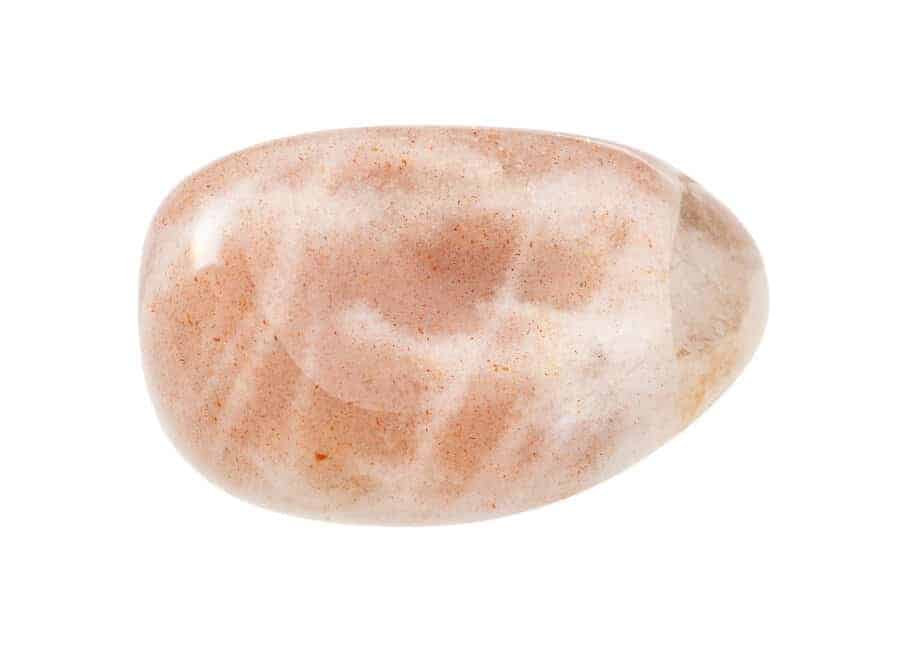Florida is an exciting state for rockhounding, highlighted by unique specimens and a wide distribution of prospective rockhounding sites. The geology of the state is characterized by very flat coastal plains in the south and rolling hills to the north. While not particularly known for its rockhounding, Florida nevertheless contains many interesting rocks, minerals, and (most notably) fossils for rockhounds who know where to look.
The best places to rockhound in Florida are the beaches along the Gulf Coast, the banks and tributaries of the Suwannee River, mines near the Georgia border, and the many quarries spread across the state. The Gulf Coast beaches of Central Florida are especially popular rockhounding destinations.
I’ll give more comprehensive lists of rockhounding locations later in this article, but if you’re just looking for the best sites in the state I’ve compiled them for you here. Here are the top 10 rockhounding locations in Florida:
| Location | Rocks & Minerals |
|---|---|
| Suwannee River | Agatized Coral Heads |
| St. Johns County beaches | Coquina |
| Ballast Point, Tampa | Agatized coral heads, Geodes |
| Tampa, shores at low tide | Agatized coral, Coral, Chalcedony, Enhydros, Fossilized shells |
| Englewood Beach | Fossilized coral, Shark teeth, Sponges, Manatee bones, etc. |
| Dunedin | Geodes (coral geodes) |
| Hillsborough River | Brain coral, Finger coral, Agate |
| Cottondale | Chert (red fossiliferous chert) |
| Mines along Georgia border | Silicified wood, Fossils |
| Cross Florida Barge Canal | Fossils, Silicified coral |
A wide variety of rocks, minerals, and gemstones can be found in Florida including agatized coral, calcite, silicified wood, chert, flint, chalcedony, and geodes. Florida beaches are also famous for producing shark teeth, fossilized coral, and manatee bones.
| State Symbols | |
|---|---|
| State Mineral | — |
| State Rock | Agatized Coral |
| State Gemstone | Moonstone |
| State Fossil | Agatized Coral |

If you’ve already found a rock and you’re not sure what it is, I would highly recommend checking out my Practical Rock Identification System. This bundle of information includes a book, videos, and online tools. It is, simply put, the most comprehensive and easy-to-understand rock identification system you’ll find anywhere.
You can also read through my free rock identification guide and mineral identification guide which are filled with useful information and tools.
Through quite a bit of research and cross-referencing of available literature, I have compiled this list of some prospective locations in Florida which I would recommend to people looking to do some rockhounding. These are mostly comprised of beaches, old mining prospects, streams, and historically known rock and mineral collecting sites. For additional reading, I’d highly recommend these books you can find on Amazon:
Please remember that rock collecting locations are constantly changing. Specimens may become depleted from other collectors, the location may have been built on or altered, locality information in literature may be inaccurate, and property ownership may have changed hands. Though there are many locations listed here, this list is far from exhaustive. A location’s listing here is not a guarantee of accuracy. Be safe, never go underground, and make sure to get permission from the landowner to search for and collect specimens.
If you’re planning on heading to the field, make sure you have all the gear you’ll need! To get started, you can check out my recommended gear page which contains my full reviews for every Geologist’s favorite rock hammer and the best hiking backpack I’ve ever owned.
Rockhounding Locations in Florida
Important Disclaimer: I have not been to these locations myself, and I do not know if they are currently open for collecting. Use this resource as a guide to get you started. Follow posted signage and always get permission from the landowner to collect.
NOTE: All the locations listed in these tables are clickable, and will take you to the location on Google Maps.
For ease of discussion, I’ll break the rockhounding locations up into four parts of the state. Please see the map below for reference.
Florida Panhandle Rockhounding Locations
The best places to rockhound in the Florida panhandle are the old mines along the Georgia border, quarries in Jackson County, and the stream banks and rocky exposures near Washington County. Most of these rockhounding locations contain chert, flint, and fossils, with some calcite and silicified.
| Location | Rocks & Minerals |
|---|---|
| Mines along FL/GA line, in sandy strata | Silicified wood, Fossils |
| Quincy, mines to the N | Silicified wood, Fossils |
| Jackson County, area quarries | Fossils, Chert |
| Cottondale, area streams and creek beds | Chert (red fossiliferous chert) |
| Washington County, area stream banks, road cuts, quarries, etc. | Chert, Flint |
| Chipley, area limestone exposures, road cuts, etc. | Calcite, Chalk, Chert, Calcite |
Northern Florida Rockhounding Locations
The best place to rockhound in northern Florida is along the banks and tributaries of the Suwannee River, where fossils and agatized coral heads can be found in abundance. Other rockhounding locations include the area’s many quarries and mines, as well as the beaches of St. John’s County.
| Location | Rocks & Minerals |
|---|---|
| Marion County, regional limonite quarries, road cuts, & exposures | Chert (gemmy chert), Fossilized ivory |
| Alachua County, regional limonite quarries, road cuts, & exposures | Chert (gemmy chert), Fossilized ivory |
| Sumter County, regional limonite quarries, road cuts, & exposures | Chert (gemmy chert), Fossilized ivory |
| Lawtey, at the Highland Mine | Kyanite, Zircon, Ilmenite |
| South Jacksonville, the Skinner Mine | Ilmenite, Rutile, Zircon |
| Jasper, area phosphate pits | Gem coral (agatized coral) |
| Stephen Foster State Park, area | Agatized coral heads |
| Suwannee River & tributaries, in banks | Agatized coral heads |
| Cross Florida Barge Canal, in banks | Fossils, Silicified coral |
| Suwannee River banks, in Levy, Lafayette, Gilchrist, and Suwannee Counties | Silicified coral |
| St. Johns County, area beaches and quarries | Coquina |
Central Florida Rockhounding Locations
The best rockhounding locations in central Florida include the Gulf beaches from Ft. Myers to Crystal River, the shorelines around Tampa, the banks of the Hillsborough River, and the many quarries in the region. Rockhounds can find many specimens including agatized coral, geodes, and chalcedony.
| Location | Rocks & Minerals |
|---|---|
| Bradford County, area quarries, road cuts, exposures, etc. | Chert, Fossilized ivory |
| Crystal River, in area limestone quarry seams | Calcite crystals (clear, yellow), Quartz (drusy), Chert, Fossils |
| Brooksville, area quarries, exposures, road cuts, etc. | Calcite crystals, Geodes (echinoid geodes), Silicified coral heads (golden calcite) |
| Tampa, at Ballast Point and David Island | Agatized coral heads, Geodes (carnelian red) |
| Tampa, area shores at low tide | Agatized coral, Coral, Chalcedony, Enhydros, Fossilized shells |
| Hillsborough River, in banks and gravels | Brain coral, Finger coral, Agate |
| Gulf beaches, esp. from Tarpon Springs to Ft. Myers | Fossilized coral, Shark teeth, Sponges, Manatee bones, etc. |
| Englewood Beach | Fossilized coral, Shark teeth, Sponges, Manatee bones, etc. |
| Pasco County, area W of Dade City in banks of rivers and streams | Silicified Coral |
| Flor-a-Mar, in dredger tailings | Agatized coral, Chalcedony |
| Banks of the Caledesi Causeway | Chalcedony (roses, deep blue, black), |
| Dunedin, W end | Geodes (coral geodes) |
| Pinellas & Hillsborough Counties, Gulf beaches | Agate, Carnelian, Chalcedony, Chert, Fossilized coral |
| Polk County, area quarries, pits, etc. | Fossils, Gypsum, Petrified wood, Uranium minerals, Vivianite |
| Lakeland, 7 mi. NE, area | Chalcedony, Silicified coral |
Southern Florida Rockhounding Locations
Southern Florida isn’t well regarded for its rockhounding, but nevertheless there are some productive sites to be found. The best rockhounding locations in southern Florida include the Gulf beaches extending south from Ft. Myers, canal cuts in Key Largo, and Blowing Rocks Preserve.
| Location | Rocks & Minerals |
|---|---|
| Fort Myers Beach, deposits around Estero Bay | Ocher (several varieties) |
| Gulf beaches, area | Fossilized coral, Shark teeth, Sponges, Manatee bones, etc. |
| Key Largo, area canal cuts & exposures | Fossilized coral heads |
| Miami, in quarries W of the city | Limestone (oolitic limestone) |
| Blowing Rocks Preserve | Coquina |
Where to Find Crystals in Florida
Due to Florida’s regional geology, there are few locations where high-quality crystal specimens can be found. However, some calcite and quartz crystals can be found near Crystal River and Brooksville in local quarries. Seams and vugs in limestone exposures are the best places to search for crystals.
Tip: Check out my Complete Rock Tumbling Guide to make your rocks and gemstones really shine!
Where to Find Shark Teeth in Florida
The best places to collect shark teeth in Florida are the Gulf Coast beaches between Tarpon Springs and Ft. Myers. Experts say that the most popular destinations for shark teeth collecting are Englewood beach, Casey Key, and Manasota Key just south of Venice, FL.
Where to Find Geodes in Florida
There are several places in Florida where geodes are found. The best locations include the west side of Dunedin, Ballast Point in Tampa, and the limestone quarries around Brooksville. These geodes are usually created in coral and are sometimes lined in beautiful carnelian red.
Florida Rockhounding Laws & Regulations
One of the most common questions rockhounds have is whether or not they are allowed to collect at a certain location. It is the responsibility of each rockhound to obtain permission from a landowner to search and/or collect on a piece of property.
The ownership and status of land can and does change frequently, making it impossible to document accurate information on this page. However, I have compiled a list of resources here so that you may investigate and obtain permission for any locations (found here or elsewhere) for yourself.
Public Land Resources
I have written entire articles which cover the rockhounding laws and regulations for nearly every type of public land you can think of. I encourage you to check them out if you are curious about the legalities of rock and mineral collecting.
- Rockhounding on Public Land: Laws and Regulations
- Can You Collect Rocks in State Parks? All 50 States Answered
To determine what type of public land a particular location is on, I would recommend starting with the Florida Department of Environmental Protection’s State Land Records Map.
In the state of Florida, it is illegal to collect rocks or fossils in a state park, and as in any state, it is illegal to collect anything in a National Park. It’s also worth noting that if you find any vertebrate fossils (aside from shark teeth) it is illegal to collect them anywhere in the state without a permit. You can obtain a fossil collecting permit here.
Private Land Resources
As with most states, each county in Florida will have records of who owns each piece of property. Unfortunately for rockhounds, the law in most states prohibits them from publishing their names or contact information online. You can get the landowner’s name and address by visiting the county records office. In Florida, I would recommend starting with the County Clerk’s office.
Sources & Further Reading
The locations and information contained in this article are primarily derived from academic papers, online resources, and other outside sources. If you would like to read some of the source material for yourself I have listed them below. The majority of these locations are my interpretation of Robert Beste’s A Location Guide for Rock Hounds in the United States. Other sources include:

